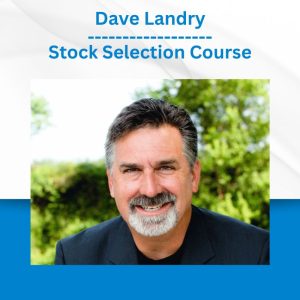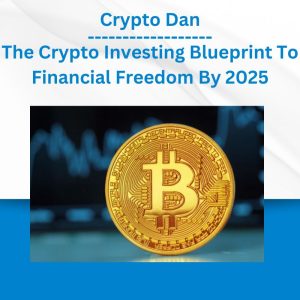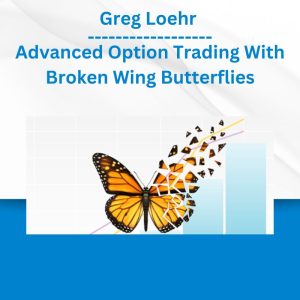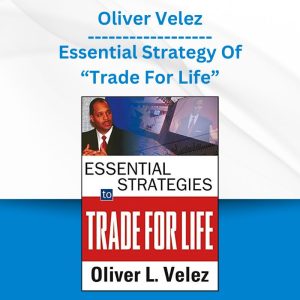*** Proof of Product ***
Exploring the Essential Features of “Stephen Nowicki – Biology: The Science of Life”
Please see the full list of alternative group-buy courses available here: https://lunacourse.com/shop/Biology: The Science of Life
Get the complete background and professional guidance to explore in depth the fundamental principles of how living things work taught by an award-winning professor at Duke University who has specially adapted his acclaimed introductory biology course.
LECTURE
Trailer
01:The Scope of “Life”
The first lecture gives an overview of biology, raising key questions about the nature of life and the origin of living things, and concludes with an outline of the structure of the course.
31 min
02:More on the Origin of Life
This lecture outlines the challenges of evolution for living entities such as we recognize today, and reviews experimental data suggesting how these challenges might have been met. The process of reproduction identifies the concept of information in biology, and introduces the connecting theme for the first third of the course.
30 min
03:The Organism and the Cell
Professor Nowicki outlines the hierarchical nature of biological systems and introduces two fundamental levels of the hierarchy: the organism and the cell.
30 min
04:Proteins—How Things Get Done in the Cell
This lecture describes the four major classes of biomolecules—lipids, carbohydrates, nucleic acids, and proteins—and discusses the role of proteins in the life of the cell.
30 min
05:Which Molecule Holds the Code?
Key experiments in the first half of the 20th century led to the conclusion that DNA is the information-carrying molecule.
31 min
06:The Double Helix
Experiments by Rosalind Franklin, Maurice Wilkins, and others led to the discovery by James Watson and Francis Crick of the double helix structure of DNA, suggesting a mechanism by which the information in DNA can be replicated.
30 min
07:The Nuts and Bolts of Replicating DNA
After describing how the theory of DNA replication was confirmed, Professor Nowicki summarizes the process, which has been the key to understanding and manipulating biological systems.
31 min
08:The Central Dogma
We are introduced to the “central dogma” of molecular biology: Genetic information flows in one direction only—from DNA to RNA to proteins, not in reverse.
31 min
09:The Genetic Code
How is protein structure coded in DNA? This lecture describes the experiments that cracked the code and examines the code’s defining properties.
30 min
10:From DNA to RNA
Step one in the journey of genetic information from DNA to proteins is the process of transcription, by which messenger RNA is made from a DNA template.
29 min
11:From RNA to Protein
Completing the description of how genetic information finds its way to functional proteins, this lecture covers the process of translation, which is the synthesis of proteins based on an RNA template.
30 min
12:When Mistakes Happen
We learn the causes for errors that creep into DNA during copying and the mechanisms that have evolved to detect and repair those errors.
30 min
13:Dividing DNA Between Dividing Cells
Moving from the molecular level to the level of cells and organisms, this lecture addresses the question: When a new being is produced, how does it acquire DNA from its parents?
30 min
14:Mendel and His Pea Plants
The first of two lectures on Gregor Mendel’s 19th-century experiments on the genetics of pea plants shows how this work anticipated the modern understanding of genes, chromosomes, and the formation of gametes during meiosis.
30 min
15:How Sex Leads to Variation
This lecture continues the discussion of Mendel’s contributions to genetics, turning to subsequent experiments in which he looked at the transmission of more than one trait.
29 min
16:Genes and Chromosomes
We explore the understanding of the cellular and molecular basis of genetics that emerged after Mendel at the turn of the 20th century.
31 min
17:Charles Darwin and “The Origin of Species”
At almost the same time that Mendel was working on his laws of inheritance, Charles Darwin was completing his theory of natural selection, which sought to explain the change of species over time.
30 min
18:Natural Selection in Action
This lecture presents several examples that demonstrate natural selection in action, including data from both field studies and laboratory experiments.
30 min
19:Reconciling Darwin and Mendel
The apparent conflict between Mendel and Darwin was resolved through the “modern synthesis,” which models gene frequency changes in populations.
30 min
20:Mechanisms of Evolutionary Change
Natural selection is not the only cause of evolution. Other factors can produce changes in the gene pool of a population, the most notable being genetic drift.
30 min
21:What Are Species and How Do New Ones Arise?
Professor Nowicki discusses problems with the biological species concept, introduces alternate definitions, and describes the process of allopatric speciation.
30 min
22:More on the Origin of New Species
Continuing the discussion of how new species arise, this lecture looks at sympatric speciation, which occurs in the absence of physical separation of populations.
30 min
23:Reconstructing Evolution
How do biologists organize the enormous diversity of living things? We learn about phylogenetic systematics as an approach for reconstructing evolutionary history.
31 min
24:The History of Life, Revisited
This lecture takes a final look at the concept of information and evolution in biology by returning to the question of how an original, primordial life form might have given rise to the complex biodiversity observed today.
31 min
25:From Cells to Organisms
This lecture recaps material presented to this point and introduces the second major section of the course, “Development and Homeostasis,” by looking at the mystery of complex, multicellular, self-regulating organisms.
30 min
26:Control of Gene Expression I
What makes cells different? We look at the mid 20th-century experiments of Jacques Monod and François Jacob in search of the mechanisms of gene regulation.
30 min
27:Control of Gene Expression II
We continue our investigation of how the proteins in a cell are determined by mechanisms that turn on and off the expression of specific genes.
30 min
28:Getting Proteins to the Right Place
Producing the right proteins at the right time is only the first step. This lecture explains how proteins find themselves in the right places inside or outside a cell.
31 min
29:Genetic Engineering and Biotechnology
The mechanisms cells use to replicate and transcribe DNA have shown researchers how to modify genes, transfer genetic material, and sequence genes.
30 min
30:How Cells Talk—Signals and Receptors
This lecture is the first of two that explore how molecular messages control cell function, focusing on how signals outside the cell get their message to the inside of the cell.
30 min
31:How Cells Talk—Ways That Cells Respond
Continuing the discussion of extracellular signals and cell function, this lecture focuses on the molecular mechanisms by which signals can change the way cells work.
30 min
32:From One Cell to Many in an Organism
How does a single cell develop into a fully formed organism? This lecture outlines the major questions surrounding development.
30 min
33:Patterns of Early Development
Professor Nowicki describes the four earliest stages of animal development – fertilization, cleavage, gastrulation, and organogenesis—outlining the processes involved in each.
30 min
34:Determination and Differentiation
Developmental processes cause cells to differentiate into many different types of cells. One such mechanism is cytoplasmic segregation.
31 min
35:Induction and Pattern Formation
The second major mechanism involved in differentiation is induction, in which cells stimulate each other to develop in different ways.
30 min
36:Genes and Development
This lecture examines the development of the Drosophila melanogaster (fruit fly) as an example of the influence of specific genes on pattern formation.
30 min
37:Homeostasis
Homeostasis refers to an organism’s ability to maintain a constant internal environment. We explore the nature of this mechanism and look at examples such as the regulation of body temperature.
31 min
38:Hormones in Animals
Homeostasis requires the different parts of a complex organism to communicate with each other. This lecture focuses on the endocrine system, which uses chemical signals called hormones to transmit physiological information.
30 min
39:What is Special about Neurons?
This lecture begins a discussion of the nervous system by examining neurons and the properties that enable them to transmit information over long distances at high speeds.
30 min
40:Action Potentials and Synapses
We review the initiation of action potentials and discuss how the anatomy of the neuron allows action potentials to propagate along the axon.
30 min
41:Synaptic Integration and Memory
In addition to transmitting information, the nervous system must also be able to process it. This lecture covers how inputs to a typical neuron are processed and stored.
30 min
42:Sensory Function
This lecture looks at the basic principles underlying sensory function—the mechanism by which animals obtain information from their environment.
31 min
43:How Muscles Work
Turning to the output side of cell function, Professor Nowicki examines muscles, describing the molecular basis for how muscle cells change their shape and exert force in doing so.
31 min
44:The Innate Immune System
How do animals defend themselves from injury or infection? We see how the nonspecific, or innate, immune response provides a general defense.
30 min
45:The Acquired Immune System
What happens if an infection can’t be handled by nonspecific defenses? This is where the more specifically targeted and more efficient mechanisms associated with acquired immunity come into play.
30 min
46:Form and Function in Plants I
This lecture begins an examination of plant structure, development, and physiology, illustrating similarities and differences with analogous processes in animals.
30 min
47:Form and Function in Plants II
We continue our study of plant form and function by looking at how homeostasis is maintained in plants and by examining the ways plants respond to the external environment.
31 min
48:Behavior as an Adaptive Trait
This lecture discusses the adaptive significance of the ways organisms respond to stimuli. Why are some behaviors inflexible and others not?
30 min
49:Energy and Resources in Living Systems
Starting with a review of previous material, Professor Nowicki sets the stage for the third major theme of the course, “Energy and Resources,” which moves from the level of molecules to global ecosystems.
30 min
50:How Energy is Harnessed by Cells
We look at the process by which cells obtain energy from a molecule called adenosine triphosphate (ATP).
31 min
51:Enzymes – Making Chemistry Work in Cells
Activation energy is the initial “push” required for a chemical reaction to proceed. This lecture examines the role and function of enzymes in facilitating chemical reactions in cells, which they do by effectively lowering this activation energy.
30 min
52:Cellular Currencies of Energy
We explore the chemical nature of ATP that allows it to serve as an energy “currency” for cells, and learn how energy is stored in glucose and other organic molecules, which allow them to act as a cellular “fuel” for making more ATP.
30 min
53:Making ATP – Glycolysis
This lecture introduces the three energy-producing metabolic processes in the cell – glycolysis, the Krebs cycle, and the electron transport chain – and looks in depth at glycolysis.
31 min
54:Making ATP – Cellular Respiration
Glycolysis extracts relatively little of the energy available in glucose. The complete harvest of this energy involves several additional processes, including the Krebs cycle and the electron transport chain.
30 min
55:Making ATP – The Chemiosmotic Theory
The electron transport chain is the process that ultimately uses the energy extracted from the breakdown of organic molecules such as glucose to drive the production of ATP, but how this worked was a mystery for decades. This lecture outlines the radical theory that finally solved this puzzle.
31 min
56:Capturing Energy from Sunlight
Living things require fuel to generate ATP. Some organisms generate fuel by converting the energy of sunlight into high-energy organic compounds through the process of photosynthesis.
30 min
57:The Reactions of Photosynthesis
Where does the added mass come from when a plant grows? The answer leads us to consider the reactions of photosynthesis and the Calvin cycle.
31 min
58:Resources and Life Histories
Many organisms have the capacity for the kind of explosive population growth associated with bacteria. Asking why such unchecked growth is rare provides a transition to considering energy and resources at higher levels of biological organization.
29 min
59:The Structure of Populations
Our survey of energy and resources moves to the level of populations, in which we define the term population and outline the characteristics of a population from an ecological perspective.
30 min
60:Population Growth
This lecture looks at population growth under the ideal conditions of exponential growth and under the more realistic assumptions of logistic growth.
30 min
61:What Limits Population Growth?
Does the logistic growth model describe the growth of real populations? The answer is “yes and no.” We look at the factors that actually regulate population growth.
31 min
62:Costs and Benefits of Behavior
The behavior of an individual changes in a way that maximizes the difference between the costs and benefits that are accrued by that particular behavior.
30 min
63:Altruism and Mate Selection
Altruistic interactions are quite common, yet difficult to understand from an evolutionary perspective. An expanded definition of reproductive fitness provides an explanation.
31 min
64:Ecological Interactions Among Species
The interaction between predators and their prey is one of the most important in nature. We examine examples of these interactions and the principles that can be derived from them.
31 min
65:Predators and Competitors
This lecture looks in more detail at cases in which one species benefits and the other is harmed, and then focuses on competition where both species might be affected adversely by the other’s presence.
30 min
66:Competition and the Ecological Niche
Continuing the discussion of competition in communities, we look at studies of how a competitive interaction affects species, which leads to the concept of the ecological niche.
30 min
67:Energy in Ecosystems
Environments store and release critical resources to the species that live in them. This lecture explores the flow of one such resource – energy – showing how inefficiencies in energy transfer can influence the abundance of a species.
30 min
68:Nutrients in Ecosystems
Unlike energy, nutrients are recycled into and out of ecosystems. To illustrate the significance of this fact, we follow the cycles of three critical nutrient elements: carbon, nitrogen, and phosphorus.
30 min
69:How Predictable Are Ecological Communities?
Many aspects of the structure and composition of ecological communities have been shown to be unpredictable. As a result, ecologists now focus on patterns of disturbance in communities instead of trying to describe the end-state of ideal communities.
30 min
70:Biogeography
Biogeography is the branch of biology that attempts to account for the patterns of distribution of populations, species, and ecological communities on a global scale. We look at examples that illustrate key points.
31 min
71:Human Population Growth
For most of history, human population size was limited by the amount of resources available naturally in the environment. But humans have repeatedly redefined ways many resources can be obtained and used, an ability that has led to a dramatic increase in world population.
31 min
72:The Human Asteroid
The increasing loss of biodiversity means that species diversity is decreasing at the very moment of our greatest strides in biological understanding. Professor Nowicki closes with reasons for alarm and hope.
32 min
DETAILS
Overview
One of the greatest scientific feats of our era is the astonishing progress made in understanding the intricate machinery of life. This intensive, 72-lecture course gives you the background and guidance to explore in depth the fundamental principles of how living things work-principles such as evolution by natural selection, the cellular structure of organisms, the DNA theory of inheritance, and other key ideas that help you appreciate the marvelous diversity and complexity of life.
About
Stephen Nowicki
It’s almost 75 years later, and we find ourselves in much the same position as Wells described in 1929. Our knowledge of biology has exploded in recent years and it continues to expand exponentially.
Dr. Stephen Nowicki is Bass Fellow and Professor of Biology at Duke University. He is also Dean and Vice Provost of Undergraduate Education at Duke, and holds appointments in the Department of Psychological and Brain Sciences and in the Neurobiology Department at Duke University Medical Center. Prior to taking his position at Duke, he was a post-doctoral fellow and assistant professor at The Rockefeller University. Professor Nowicki earned his undergraduate degree and a master’s degree at Tufts University, and his Ph.D. from Cornell University. He is the recipient of the Robert B. Cox Distinguished Teaching Award from Duke University. He has been awarded fellowships from the Mary Flagler Cary Charitable Trust, the Alfred P. Sloan Foundation, and the John Simon Guggenheim Foundation. Professor Nowicki has published more than 65 scholarly articles in academic journals and is coauthor of the book The Evolution of Animal/Communication: Reliability and Deceit in Signaling Systems.
REVIEWS
London2000
Excellent course, but showing its age
This is an excellent introductory course to biology and Prof Nowicki is a superb lecturer who presents wide-ranging material in a clear, concise way, speaking fluently without the need for “umms and aars”. My only criticism, which can’t be laid at the feet of Prof Nowicki, is that the course is now somewhat dated. I suspect it was made around 2005 and biology is a rapidly changing field, especially in terms of cell biology. I feel that Wondrium should consider commissioning a new general biology course. However, I fully recommend Prof Nowicki’s course to anyone who wishes to seek a grounding in biology.
Rl183
Comprehensive Biology Course
Excellent teacher, comprehensive and understandable biology course. I want more like this!
Noorali
Philosophy of Science
This is so in-depth, I have to stop after 15 minutes of watching, to absorb the material. I am only on Lecture 2. A Biology textbook would easily have put me to sleep, but these lectures will challenge, it seems. How life arose on Earth or somewhere is an unsolved problem that may not be solvable, but look at how much we learn in attempting.










 Oliver Velez - Essential Strategy Of Trade For Life
Oliver Velez - Essential Strategy Of Trade For Life